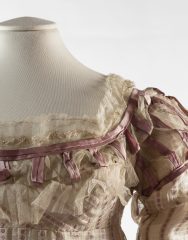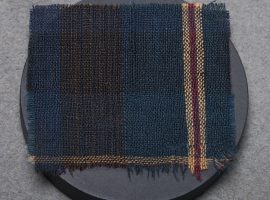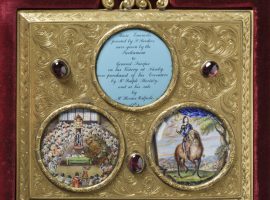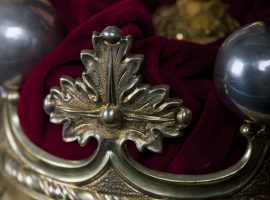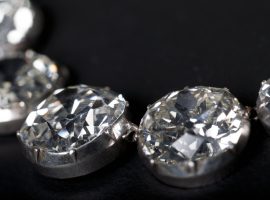Adorning the Body
If you think that Royal Ascot or the Derby hosts the most outrageous headdresses you’ve ever seen, think again! Ostrich feathers, jewels, even ships(!), Georgian headwear had it all. And what good is the perfect hair without a perfect face? Read all about eighteenth-century headwear and make-up in these articles.
Wigs, Ships and Feathers: Georgian Hair & Headwear
Whether they wore their own hair or someone else’s, Georgians could not hope to impress unless their hairstyle was as remarkable as it was impeccable.
Fashioning the Face: Cosmetics and the Idea of Georgian Beauty
Georgian notions of ‘politeness’ were bound to ideals of beauty. Tasteful applications of cosmetics therefore enabled wearers to express cultural refinement and ensure social acceptability.
Tartan: pattern of resistance
In the aftermath of the Battle of Culloden, the British Government banned the wearing of tartan, a potent expression of Scottish Highland identity that conveyed a powerful sense of clan loyalty, allegiance to the Stuart royal line and commitment to the Jacobite cause.
The Fairfax Jewel
The Fairfax Jewel, a series of three mid-seventeenth-century enamel roundels, was presented by Parliament to Sir Thomas Fairfax, known as ‘Black Tom’, to celebrate his Naseby victory against Royalist forces during the Civil War.
The Mark of Rank
There is undeniably a dignity and a certain charm attached to a coronet. Essentially a crown in miniature, the coronet is primarily a distinguishing sign of rank, reserved for members of the nobility and peers of the realm.
Georgian Diamonds: The Birth of the Brilliant
The diamond was the premier gem of the eighteenth century: symbolising status, wealth and privilege, the ultimate fashion accessory and jewel of choice of the Georgian age.
